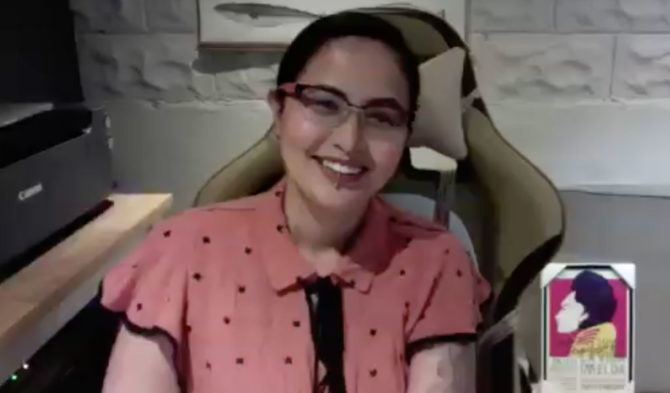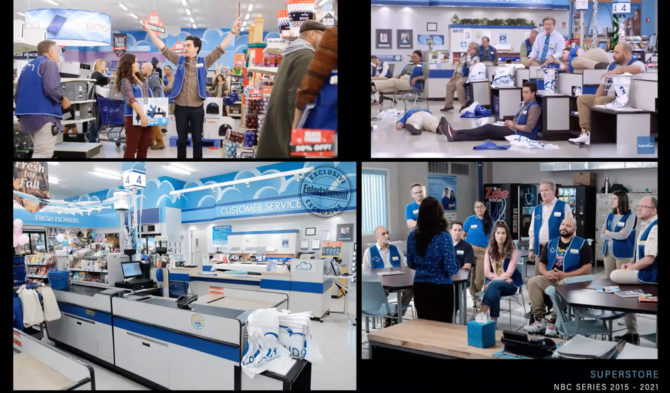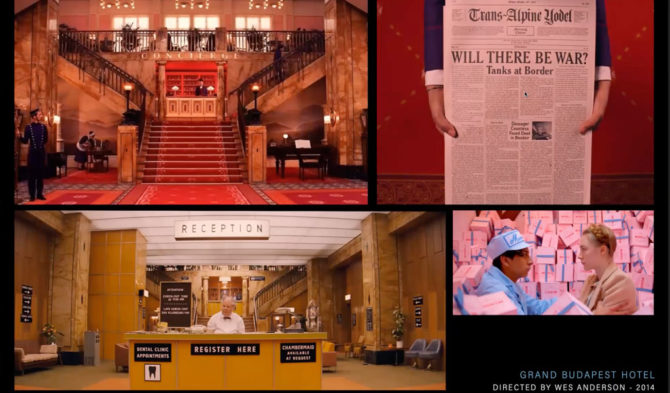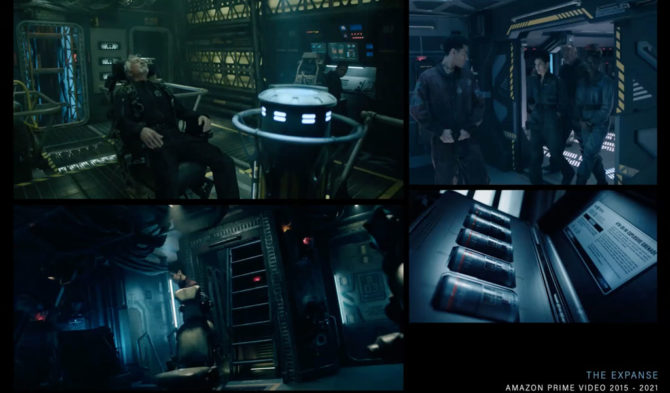Beyond Posters: Graphic Design Plays Innovative Part In Film & Television Industry, Students Learn
From the Cloud Nine logos in Superstore, to the reception desk signage in The Grand Budapest Hotel, to the space-age props in The Expanse – Graphic Design & Interactive Media students were recently introduced to some of the innovative ways design is incorporated into film and television productions.
“When we’re talking about graphic design and designers within film… usually everyone kind of jumps to thinking about movie posters and that’s kind of it, but there’s so, so, so much more out there,” Pheinixx, Director of the Graphic Design & Interactive Media program, said during a recent webinar entitled Designers in Film and Television.
“It is a fascinating, giant big realm and career path in itself, so I am really excited that we get to share this so that hopefully we open up some minds and open up some possibilities today.”
On hand during the webinar to help Pheinixx in her mission to expose students to the exciting opportunities awaiting them in film industry were Kim Sison, a Toronto-based graphic designer/illustrator who specializes in designing prop and set graphics, and David Seymour, the Director of Member Services at the Directors Guild of Canada – Ontario District Council.

Sison began her career as a graphic designer in film and television back in 2011 as an apprentice for the DGC.
In the decade that’s followed, she’s gone on to work in the art departments of films including Carrie, Room and Pompeii, as well as television shows such as Rogue, Man Seeking Woman, and The Expanse, on whose set she’s currently working as the head graphic designer.
“What is graphic design in film? I would say it’s our job to add the final layer to the sets, props and costumes that that tell that story of where and when the film is set. We help tell the story with graphics,” she explained.
“If, for example, you’re doing a film that takes place in a school, the graphic designer would be the person who’s doing all the kids homework that you see on the walls, all the stuff that you can see on the blackboard, and the locker decorations and stuff like that.”

One show currently on television that Sison especially admires for its graphic design is Superstore, whose art department’s attention to detail is unrivalled.
“I’ve been binge eating it for the last week, and I think part of the reason why I’m so obsessed with it…is that the graphic design is just so, so convincing,” she said, praising all the little details – from the Black Friday sale signs, to the name tags, to the break room soda pop machine.
“A lot of it you wouldn’t even notice because the whole show takes place in a store that’s very much like Walmart…you wouldn’t even notice how much detail they put into it, unless you’re really, really looking, but it’s amazing.”

Sison also lauded Wes Anderson’s The Grand Budapest Hotel for its graphic designer Annie Atkins’ “iconic” creation of what essentially turned out to be two completely different sets, set in different time periods
“It’s the same hotel, but shown in different times – one that takes place in the ’30s, which shows it super fancy in its heyday, but then again in 1968, when it’s a little rundown, so you can see all the signage is utilitarian and just awful,” she said.

Lastly, Sison brought examples of her own work from the futuristic sci-fi series, The Expanse, which she characterized as very different from those of productions set in the past or present.
“The graphic design for sci-fi versus the graphic design for modern day or graphic design for a period pieces it’s completely different – it’s all very much chevrons and space numbers,” she laughed.
“It’s a very different mindset trying to make mission patches and things are very much on a 45 degree angle that kind of thing, but it’s also a really fun challenge. It’s also dealing with things that don’t exist yet, so you have to expand your imagination to fit that sort of aesthetic.”
Reflecting back on her career so far, Sison characterized her experience as a graphic designer specializing in prop and set graphic designs as “super exciting.”
“It’s always something different, and that’s why I really, really like it. Every project is going to be something new,” she said, encouraging the students in the audience to follow in her footsteps.

To those ends, Seymour was on hand to introduce students to the Director’s Guild of Canada – the national labour organization that represents more than 5,500 key creative and logistical personnel in the screen-based industry covering all areas of direction, design, production and editing.
“What we do for our members is really kind of protect the quality of your conditions of work and your rate of pay…Members also get what we consider to be a really excellent health and welfare benefits plan and a retirement savings package,” he said.
“We also offer a curriculum so that you can continue to train up on your core skill sets and soft skill sets, so you can really kind of enhance your opportunities to move up in your career as you continue to work.”
The DGC also offers up a number Guild Apprentice Programs, including one aimed at aspiring young assistant art directors that Seymour encouraged students to apply for.
“What we’ve developed is our Guild Apprentice Program and it’s aimed people who don’t meet the minimum criteria of eligibility for membership in the DGC.
“It includes some training right at the outset of the program and then you’re kind of elevated to a position…where you’re able to work on DGC signatory shows. From there, you can gain the certain number of days of experience necessary to graduate and become a full member,” he explained.
Applications for the next intake of the bi-annual Guild Apprentice Program – Trainee Assistant Art Director are open Monday, April 19 and close Thursday, April 22 at noon.
Click here for more information.


